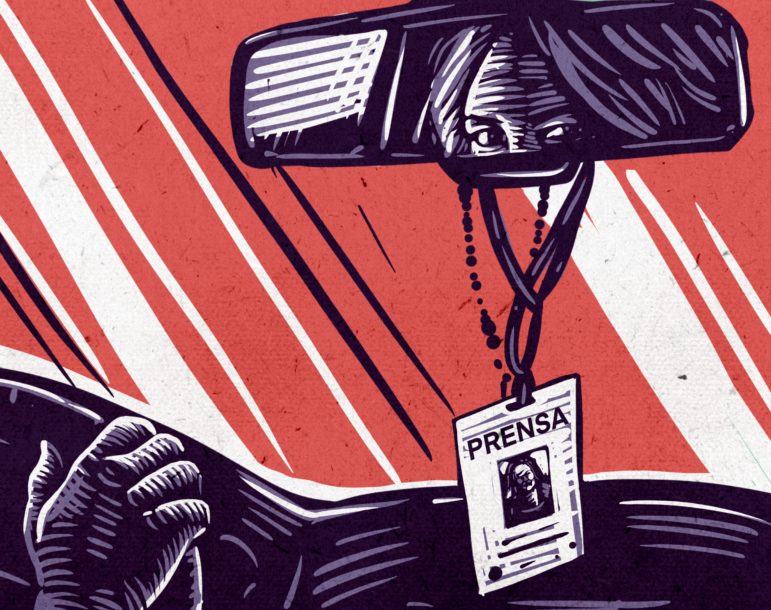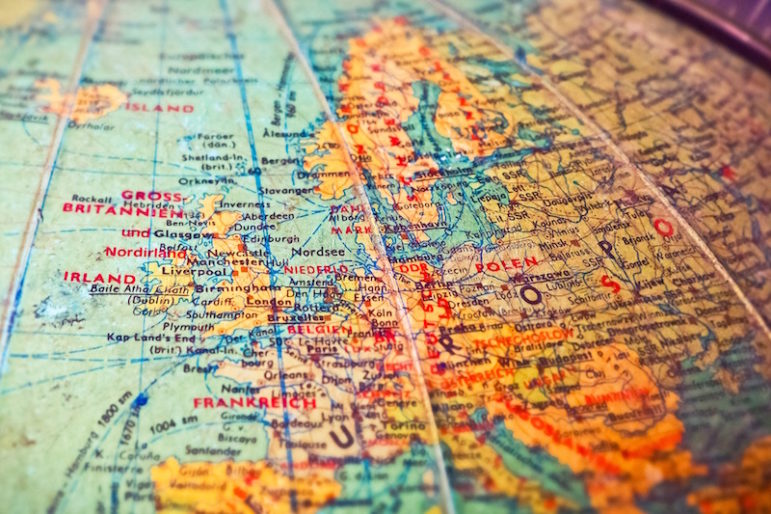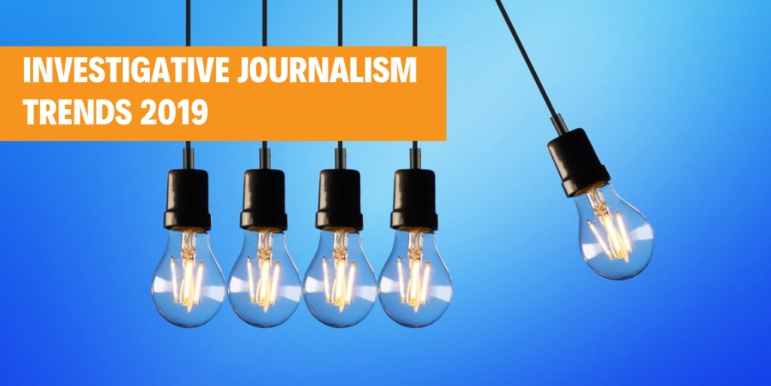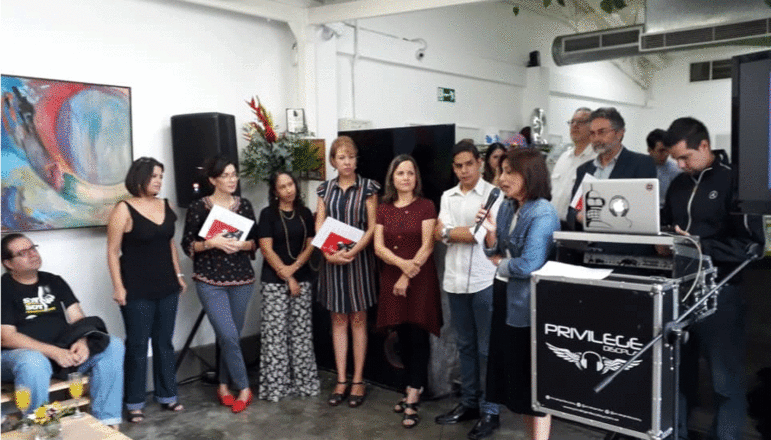

Collaborating with NGOs: A Strategic Alliance Approach for Journalists
The European Investigative Journalism Conference at Mechelen, Belgium, broke ground by putting a still-novel subject on the agenda: “Journalism with a Cause and Journalism Funded by Interest Organizations: Business Model or Gray Zone?”
Following the eruption of nongovernmental organizations (NGOs) into investigative reports, journalists are moving toward NGOs. The Organized Crime and Corruption Project (OCCRP) is working with Transparency International, and this spring various Greenpeace offices sponsored and published an eight-country investigation into the European Union’s Common Agricultural Policy (CAP) that was proposed by this writer and carried out by journalists based in Denmark, Poland, Italy, Belgium, France, the Netherlands, Austria and Germany.
The question on the table is no longer whether, but how investigative reporters can collaborate with NGOs. The main hurdles concern ethics and credibility. NGOS are considered biased, by their very nature. In this view they can provide information to journalists, like any other source. But they are “not media,” as Blaz Zgaga, a distinguished independent reporter from Slovenia, put it at Mechelen. Taking their money, as opposed to working for and with news media, therefore means risking one’s credibility.
With all respect, I think this is a secondary debate. If we are in “a war,” as Drew Sullivan of the OCCRP recently said, we must have allies who share key goals and values. Some NGOs meet those criteria. It would be more useful to treat collaborations with them as strategic alliances, in which partners share resources and risks toward an agreed-upon goal. In strategic partnerships, working methods, standards, and desired outcomes are matters of negotiation.
When I approached Evy Op ‘t Eynde from Greenpeace Belgium in 2017 to propose what became the CAP Project, I had that model firmly in mind. I have spent 17 years at the INSEAD business school teaching and writing for an executive program called Managing Partnerships and Strategic Alliances.
I also spent a decade researching the emergence of NGOs and other “stakeholder-driven media” with my colleagues Luk N Van Wassenhove and Maria Besiou at the INSEAD Social Innovation Center. This is a trend that predated the eruption of fake news, and it is not going to end soon. We can consider it a competitive threat, or a collaborative opportunity.
Set Clear Goals and Roles
The CAP Project was designed by myself and Evy Op ’t Eynde, head of investigations at Greenpeace Belgium and a lawyer with corporate experience, as a strategic partnership. Let’s note that this isn’t the easiest way to make a project, let alone a living. The scholarly business literature shows that about three-fourths of strategic alliances fail. But the literature also shows that when the goals are clear and the work is properly shared, the benefits can be major and lasting.
The first step in a strategic alliance involves due diligence. You decide what you want to achieve, then ask hard questions about your partner’s character and objectives, as well as the resources they can bring. You may want partners who provide similar resources, like reporters, the most common form of alliance in journalism. Or you may want someone who will commit complementary resources – the ones you need, but don’t have. That was my situation.
I first began watching Greenpeace in the 1970s, when they sent boats staffed by activists to confront whalers on the high seas. A decade ago, Greenpeace joined a coalition with The Guardian and other European media to confront the oil firm Trafigura. I knew very well that Greenpeace – like Amnesty International, Global Witness, and other NGOs I’ve had the opportunity to work with as a trainer – take the accuracy and coherence of their reports very seriously. I had also concluded that they embody a new kind of information media.
Greenpeace was among the enterprises from which my INSEAD colleagues and I abstracted our business model of stakeholder-driven media (SDM). SDM exist to protect and promote the interests of specific communities. (Of course there are corrupt SDM, just as there are corrupt MSM. But I’m not collaborating with them.)
SDM are not primarily in the business of telling “the public” what matters. They tell people who already know what matters how they can deal with it. I’ve heard such audiences referred to as “silos.” Greenpeace has 3.1 million donating members and 71 million social media followers. That looks to me like a major core audience that might listen to what I have to say
I wanted to work with people focused on achieving reforms that matter to me. I have lived part-time in a farming region since 2001, and I saw first-hand that subsidies through the EU’s Common Agricultural Policy (CAP) had failed miserably to save rural Europe from depopulation, while making agribusiness interests very rich. Greenpeace has a reform platform, and I checked it before undertaking the project. The minimum criterion for collaborating with NGOs is acceptance of their means and ends.
A Coalition Model
I respect the view that investigative journalists must leave it to the public to demand change. That is indeed one way to change the world, but it is hardly the only way. David L. Protess and his colleagues showed decades ago that reforms based on investigative reporting depend, more often than not, on a “coalition model” of alliances created by journalists. That’s how the original Muckrakers worked with the Progressive Movement in the early years of the 20th century, and it’s how journalist Albert Londres set about shutting down France’s horrific colonial prison camps in the 1920s.
The alternative to the coalition model, said Protess, is the “mobilization model,” as in Watergate, where public outrage compels authorities to reform. In my experience, it rarely works as claimed. An example: In 2017 I participated in the MEPs Project, which exposed misuse of European Parliament funds by its members. Following publication of our work in 28 countries, we were approached by NGOs asking for access to our data. My teammates said, in so many words, “We’re not activists.” We achieved a declaration by the President of the Parliament that he would study the issue and a hearing before the European Court of Justice; then came a vote by the Parliament to reject further transparency. That was when I decided that my next project would involve a partner who has lobbying muscle. Someone like Greenpeace.
Greenpeace could bring other resources to the table. In our contract I specified that the involved Greenpeace offices would undertake legal reviews of our product. Greenpeace has access to expert libel lawyers in every country where they operate. The project budget was 23,000 euros, of which 4,000 was paid in French taxes. At Mechelen the project cost was of intense interest to other NGOs, who said they hadn’t invited journalists to run investigations because they thought we cost too much. The sums they had in mind were ten times what my team was paid.
The key resources my team provided were expertise with specific databases, the ability to thoroughly investigate companies, and to identify and compose compelling stories on a deadline. We knew we could deliver a powerful story, based on test runs. Three years ago, I’d set my students at the University of Aix-Marseille to investigate the CAP data I learned about from Nils Mulvad and Brigitte Alfter, founders of farmsubsidy.org. A primary goal of the CAP is to protect rural jobs. We identified the top 100 recipients of subsidies in France, and hand-checked their company records to see if they were adding or subtracting employees. Stefan Wehrmeyer, then with the German investigative journalism group Correctiv, figured out a much more efficient way to do a parallel project. The CAP’s other declared goal is to protect the environment. Stefan matched the EU’s pollution database, the E-PRTR, to CAP subsidy recipients in Germany. Company records could then be used to supplement and enrich the initial discoveries. The resultant story of how CAP funds enrich polluters became our template.
We quickly learned that Greenpeace possesses deep expertise on agricultural pollution. In a conference call, Greenpeace’s top agricultural expert and a scientific adviser grilled Stefan and me on what we expected to find. The Greenpeace team posed significant demands, but they were also acknowledging their vulnerability. If we failed, so might their campaign. So my first call when the project was signed went to Nils Mulvad, who has studied the EU’s databases and FOI rules since at least 2005.
Strategic partnership involves deciding who gets which rewards over time. Investigative work creates assets like skills, data and relationships. We agreed to share those assets with Greenpeace. I made that proposal because I knew Greenpeace would need the data to fact-check our work, and because we wanted to build Greenpeace’s capacity to continue the work.
We therefore also proposed that we would train their personnel in exploiting the assets. This is something I learned from OCCRP and Arab Reporters for Investigative Journalism: If the project doesn’t build capacity, there’s a big opportunity cost, a prize left on the table. Ultimately, the training was dropped, because we shifted the budget to expand from an initial target of three countries to eight. But we can always go back and do that piece.
Overcoming Conflicts
In any strategic partnership, there is always an element of cultural conflict. People don’t understand each other, because they come from different frames, use different terms, or have different manners. Most important here was that deadlines have a different meaning for NGOs and journalists. Deadlines in news media can change depending on the news that day or week. But you cannot ask a multinational NGO to delay a campaign timed to legislative schedules, whatever else happens. Evy Op ’t Eynde never stopped reminding us of time. We included her in weekly meetings with the team, shared information on our problems so there’d be no ugly surprises, and engaged with other people at Greenpeace when Evy asked us to. It took time, but that’s how you build trust, and you can’t succeed without it.
It’s often said that NGOs will try to influence the findings of an investigation. It happens in news media as well, and the acceptable solution is to make the story based on what you can prove. Here’s how it worked in the CAP Project. Our contract included a clause that said if we could not prove our working hypotheses, we would prove what the data supported. Greenpeace is very concerned about cattle farming, and the principal pollutant released by cows is methane. Early on we promised to look for data to support that angle, but I finally told Greenpeace that we couldn’t work on methane and deliver a valid investigation on time. The subject was never raised again.
We also gave Greenpeace and the project team joint approval of each other’s work. The involved Greenpeace offices shared every bit of text and illustration that accompanied our stories. In France, Suzanne Dalle, the national lead on the project, prefaced my story with an editorial that set out Greenpeace’s take on it, which she asked me to review. GreenpeaceEU took our story and turned it into a report, and we had full review and correction rights. I’ve seen equally high standards at news media, but not always.
In the end, we were able to show that CAP subsidies enable big farmers to invest in highly polluting activities. We also showed that key players had structured their enterprises so that the resultant pollution would not trigger reporting requirements. In business it’s called “regulatory arbitrage,” and the CAP is a prime example. Greenpeace found that news as interesting as we did.
What About Impact?
Did we have impact? In some countries — Belgium, Italy, Austria, the Netherlands – the stories were proposed to mainstream media by the respective Greenpeace office, our team members or myself, and published by them according to their standards. In France, no mainstream media took the story, but several picked up Greenpeace’s press release, and 142,000 people had clicked on our version at greenpeace.fr the last time I looked. There was also massive pickup by other NGOs and SDM for farmers. We also placed the original version of the English-language summary story in the UK online magazine The Ecologist. Greenpeace offices are undertaking further investigations, notably in Denmark and Belgium.
Greenpeace has also begun lobbying to reform the CAP in a way that takes resources from polluters and gives them to farmers engaged in sustainable practices. They’re demanding greater transparency in how agricultural pollution is reported, after our investigation showed that only a tiny percentage of emissions from livestock farms end up in databases.
I know for sure that as investigative reporters, we would not have succeeded on our own, even if we could have persuaded news editors across Europe to invest in our project in time to affect current negotiations over the CAP. That’s not the same as partnering with a powerhouse that makes change its priority and shapes its priorities to reflect your findings.
In the end, the process can be much less complicated than the current debate on working with NGOs would suggest. You choose the right partner, you set the terms and goals, and you solve the conflicts that arise. The business model includes the hoped-for reform at the end of the investigation, its audience, and the resources both partners bring to the table. If you can’t accept that, you can still do something else.
The ultimate test of an alliance, a business executive told me, is whether the partners would collaborate again. For me the answer is yes. You may not agree. Fine. But let’s stop asking who is purer than whom between journalists and NGOs. Let’s start asking who is worth working with, for what, and how.
 Mark Lee Hunter is the author of Story-Based Inquiry: A Manual for Investigative Journalists (UNESCO 2009). He is also the author, with Luk N Van Wassenhove and Maria Besiou, of Power is Everywhere: How Stakeholder-driven Media Build the Future of Watchdog News (Stakeholder Media Project 2017). His awards include IREs for international reporting and research on journalism. He lives in Paris.
Mark Lee Hunter is the author of Story-Based Inquiry: A Manual for Investigative Journalists (UNESCO 2009). He is also the author, with Luk N Van Wassenhove and Maria Besiou, of Power is Everywhere: How Stakeholder-driven Media Build the Future of Watchdog News (Stakeholder Media Project 2017). His awards include IREs for international reporting and research on journalism. He lives in Paris.











